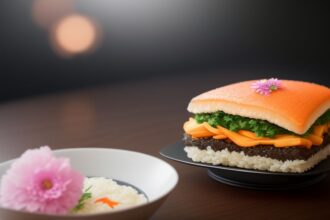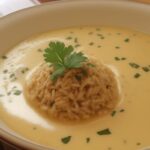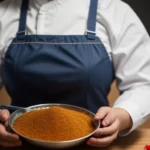Washoku: The UNESCO-recognized Tradition of Japanese Dietary Culture
Introduction
Washoku, traditional Japanese cuisine, has been recognized by UNESCO as an intangible cultural heritage in 2013. This culinary tradition reflects the principles of Japanese society, emphasizing harmony, balance, and seasonality. Washoku not only satisfies the taste buds but also nourishes the body and soul. In this article, we will explore the history, elements, and significance of Washoku in Japanese dietary culture.
History of Washoku
Washoku has a rich history that dates back to the Jomon period (14,000 – 300 BC) when the first inhabitants of Japan relied on hunting, gathering, and fishing for food. The introduction of rice cultivation from China in the Yayoi period (300 BC – AD 300) facilitated the development of a distinctive cuisine. In subsequent centuries, Buddhist and Chinese influences further shaped Japanese culinary traditions.
It was during the Edo period (1603-1868) that Washoku as we know it today began to take shape. The concept of ichiju-sansai, a meal consisting of soup, rice, and three side dishes, became the standard for Japanese dining. The popularity of tea ceremonies and kaiseki ryori, a multi-course meal that emphasizes seasonality and presentation, also contributed to the refinement of Washoku.
Elements of Washoku
Washoku is characterized by five key elements: rice, soup, pickles, main dish, and side dishes. Rice, the staple food of Japan, is typically served steamed and unsalted to complement the other dishes. Miso soup, made from fermented soybean paste, is a common accompaniment to rice. Pickles, or tsukemono, add a crunchy and tangy element to the meal.
The main dish in Washoku is usually a protein such as fish, meat, or tofu, prepared in various cooking techniques such as grilling, steaming, or simmering. Side dishes, known as okazu, include vegetables, seaweed, and seasonal ingredients. The art of arrangement, known as shun, plays a crucial role in presenting Washoku dishes in a visually appealing manner.
Seasonality in Washoku
Seasonality is a fundamental principle in Washoku, reflecting the changes in nature and ensuring that ingredients are consumed at their peak freshness. The Japanese calendar is divided into 24 mini-seasons known as sekki, each representing a specific period of time. Ingredients are selected based on these seasonal divisions to create dishes that capture the essence of each season.
Kaiseki ryori, a traditional multi-course meal, is a prime example of how seasonality is incorporated into Washoku. The menu changes with the seasons, featuring ingredients that are abundant and flavorful at that time of year. By aligning their meals with nature’s rhythm, the Japanese honor the cyclical changes of the seasons and celebrate the beauty of each time of year.
Health Benefits of Washoku
Washoku is not only delicious but also healthful, with a focus on fresh, natural ingredients and mindful preparation techniques. The Japanese diet is low in fat, sugar, and processed foods, making it one of the healthiest in the world. The consumption of fish, seaweed, and fermented foods such as miso and soy sauce contributes to overall well-being.
The traditional Japanese meal structure, with its emphasis on variety and balance, provides essential nutrients and vitamins needed for a healthy diet. The practice of eating until 80% full, known as hara hachi bu, promotes mindful eating and prevents overeating. Studies have shown that following a Washoku diet can help reduce the risk of chronic diseases such as heart disease, diabetes, and obesity.
Culinary Techniques in Washoku
Washoku employs a variety of culinary techniques to enhance the natural flavors of ingredients and create harmonious dishes. Grilling, steaming, simmering, and deep-frying are common cooking methods used in Japanese cuisine. Each technique brings out different textures and tastes, allowing chefs to showcase the intrinsic qualities of the ingredients.
One of the most distinctive techniques in Washoku is the art of fermentation, which is used to produce staple ingredients such as miso, soy sauce, and sake. Fermented foods add depth and umami flavor to dishes, enriching the overall dining experience. The meticulous attention to detail and precision in cooking reflects the Japanese philosophy of striving for perfection in all aspects of life.

Traditional Dining Etiquette
Japanese dining etiquette plays a crucial role in the enjoyment of Washoku, emphasizing respect for food, fellow diners, and the chef. Before eating, it is customary to say “itadakimasu” to express gratitude for the meal. Chopsticks are the primary utensil used for eating, and certain rules govern their proper use, such as not pointing with them or passing food directly from one pair of chopsticks to another.
When dining in a traditional setting, guests are seated on tatami mats and served kaiseki ryori, a multi-course meal that highlights seasonal ingredients. Each course is presented with care and attention to detail, reflecting the chef’s skill and creativity. It is considered polite to eat everything on one’s plate and not waste food, as this shows appreciation for the chef’s effort and ingredients.
Cultural Significance of Washoku
Washoku plays a central role in Japanese culture, influencing various aspects of society including art, literature, and rituals. The seasonal changes in ingredients are reflected in haiku poetry, ukiyo-e prints, and tea ceremonies, highlighting the beauty and transience of nature. Washoku also serves as a symbol of Japanese identity and heritage, connecting people to their culinary roots and traditions.
The concept of hospitality, known as omotenashi, is integral to Washoku, emphasizing the importance of welcoming guests and making them feel at home. Through food, the Japanese express their values of harmony, respect, and generosity, reinforcing social bonds and fostering a sense of community. Washoku is a reflection of the Japanese spirit and values, embodying a deep appreciation for nature, simplicity, and balance.
UNESCO Recognition
In 2013, Washoku was inscribed on UNESCO’s Representative List of the Intangible Cultural Heritage of Humanity, recognizing its importance as a cultural symbol and culinary tradition. The designation highlights Washoku’s significance in promoting sustainable food practices, preserving traditional knowledge, and fostering intercultural dialogue. UNESCO’s recognition has brought global attention to Washoku and spurred efforts to safeguard and promote this unique culinary heritage.
Future of Washoku
As Washoku continues to gain popularity worldwide, efforts are being made to preserve and promote this rich culinary tradition for future generations. Initiatives such as Washoku World Challenge and Japanese Cuisine Goodwill Ambassadors aim to educate people about the principles and practices of Washoku and encourage the next generation of chefs to uphold its values. By raising awareness about the cultural and health benefits of Washoku, advocates hope to ensure its continued relevance and appreciation in the modern world.
Conclusion
Washoku, the UNESCO-recognized tradition of Japanese dietary culture, embodies the values of harmony, seasonality, and balance. Rooted in centuries of history and influenced by Buddhist and Chinese cuisines, Washoku reflects the essence of Japanese society and nature. By incorporating fresh, seasonal ingredients and applying meticulous culinary techniques, Washoku offers a holistic dining experience that nourishes the body, mind, and soul. As a symbol of Japanese identity and heritage, Washoku continues to inspire and delight people around the world, fostering appreciation for Japan’s rich culinary tradition.
FAQs about “Washoku: The UNESCO-recognized Tradition of Japanese Dietary Culture”
- What makes “Washoku: The UNESCO-recognized Tradition of Japanese Dietary Culture” an important read for food enthusiasts? This book delves into the UNESCO-recognized tradition of Washoku, providing insights into the cultural significance, ingredients, cooking techniques, and health benefits of Japanese dietary culture.
- What is Washoku, and why is it significant? Washoku refers to traditional Japanese cuisine, which emphasizes seasonal ingredients, harmony of flavors, and meticulous presentation. It holds UNESCO recognition as an Intangible Cultural Heritage of Humanity, reflecting its cultural importance.
- Which aspects of Washoku are covered in this book? “Washoku” covers various aspects of Japanese dietary culture, including staple ingredients like rice and fish, cooking methods such as grilling and steaming, traditional dining etiquette, and the spiritual connection between food and nature.
- How does this book celebrate the cultural heritage and culinary artistry of Washoku? This book celebrates the cultural heritage and culinary artistry of Washoku by exploring its historical roots, regional variations, and the philosophical principles that underpin Japanese cuisine, such as the concept of “ichiju-sansai” (one soup, three dishes).
- Can readers expect to find practical tips and recipes for incorporating Washoku principles into their own cooking from this book? Absolutely! “Washoku” offers practical tips, cooking techniques, and authentic recipes for readers to embrace the principles of Washoku in their own kitchens, allowing them to enjoy the flavors and health benefits of Japanese dietary culture at home.
Advantages:
- Cultural Significance: “Washoku: The UNESCO-recognized Tradition of Japanese Dietary Culture” highlights the UNESCO recognition, indicating the cultural significance and global importance of washoku, Japanese dietary culture.
- Educational Value: By focusing on washoku, the title offers readers valuable insights into Japanese culinary traditions, ingredients, cooking techniques, and the cultural significance of food in Japanese society.
- Prestige: The reference to UNESCO recognition adds credibility and prestige to the title, suggesting that the content will provide authoritative information about washoku and its place in world heritage.
- Culinary Exploration: Washoku encompasses a wide range of dishes, flavors, and culinary traditions, and the title encourages readers to explore this rich and diverse aspect of Japanese cuisine, fostering a deeper appreciation for Japanese gastronomy.
- Promotion of Cultural Understanding: The title promotes cultural understanding and appreciation by highlighting washoku as a UNESCO-recognized tradition, encouraging readers to learn about and respect Japanese dietary culture.
Disadvantages:
- Narrow Focus: While the title emphasizes washoku, it may overlook other aspects of Japanese cuisine or culinary traditions, potentially limiting the depth of the discussion and excluding lesser-known Japanese foods or cooking styles.
- Complexity: Washoku encompasses a wide range of dishes, ingredients, and culinary practices, and the title may not fully capture the complexity and diversity of Japanese dietary culture in a single guide.
- Audience Limitation: The title may primarily appeal to readers with a specific interest in Japanese cuisine or food culture, potentially excluding those who prefer other types of cuisine or are seeking a broader overview of global culinary traditions.
- Accessibility: Some ingredients used in washoku may be difficult to find outside of Japan or specialty markets, limiting the practicality of preparing authentic washoku dishes for readers in certain regions.
- Subjectivity: The UNESCO recognition of washoku may be subject to interpretation or debate, and some readers may question whether it truly represents the entirety of Japanese dietary culture or overlooks certain regional or historical aspects.
















